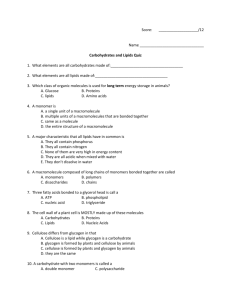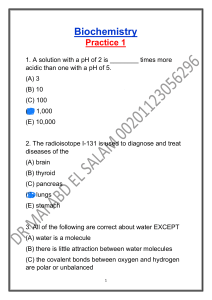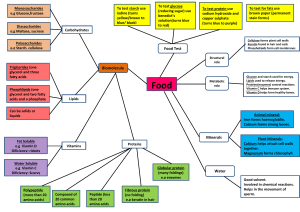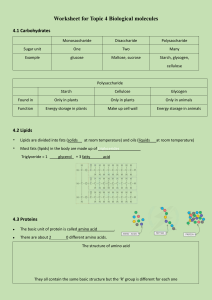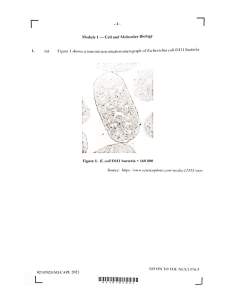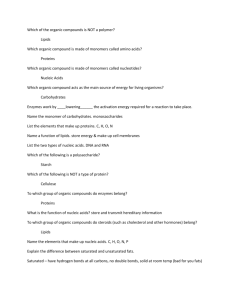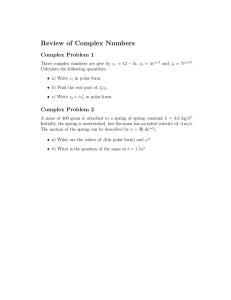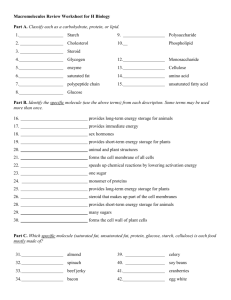Vocabulary terms for Unit 2, Chapters 2-5: Chemistry of... Chapter 2 Key Terms: Chapter 3 Key Terms:
advertisement
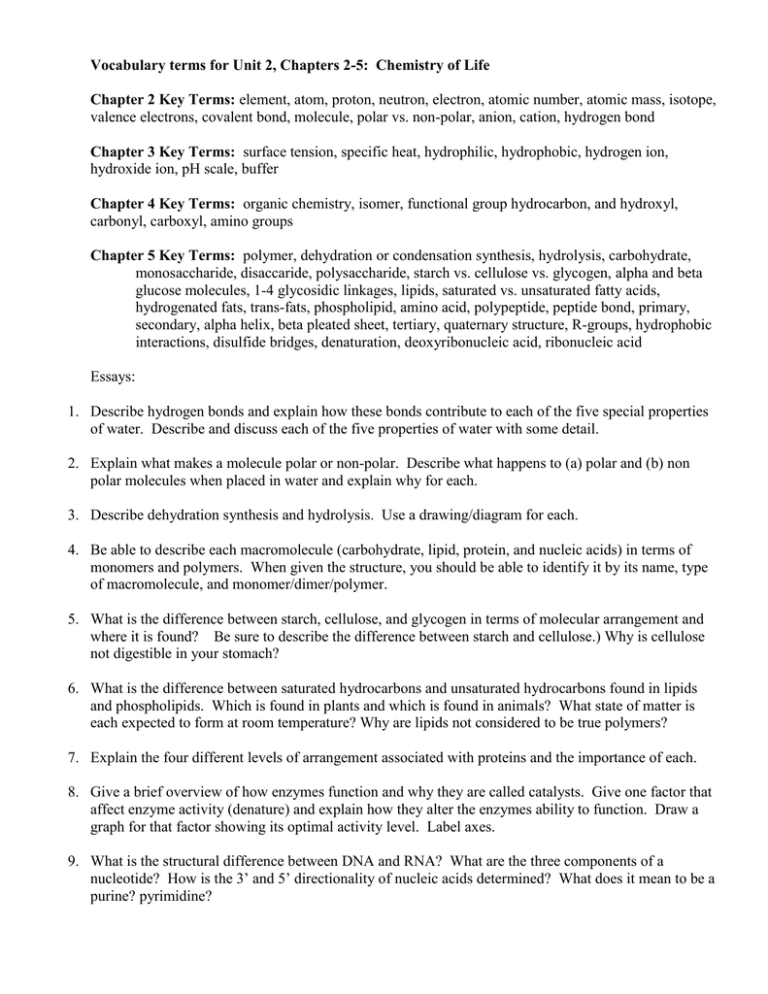
Vocabulary terms for Unit 2, Chapters 2-5: Chemistry of Life Chapter 2 Key Terms: element, atom, proton, neutron, electron, atomic number, atomic mass, isotope, valence electrons, covalent bond, molecule, polar vs. non-polar, anion, cation, hydrogen bond Chapter 3 Key Terms: surface tension, specific heat, hydrophilic, hydrophobic, hydrogen ion, hydroxide ion, pH scale, buffer Chapter 4 Key Terms: organic chemistry, isomer, functional group hydrocarbon, and hydroxyl, carbonyl, carboxyl, amino groups Chapter 5 Key Terms: polymer, dehydration or condensation synthesis, hydrolysis, carbohydrate, monosaccharide, disaccaride, polysaccharide, starch vs. cellulose vs. glycogen, alpha and beta glucose molecules, 1-4 glycosidic linkages, lipids, saturated vs. unsaturated fatty acids, hydrogenated fats, trans-fats, phospholipid, amino acid, polypeptide, peptide bond, primary, secondary, alpha helix, beta pleated sheet, tertiary, quaternary structure, R-groups, hydrophobic interactions, disulfide bridges, denaturation, deoxyribonucleic acid, ribonucleic acid Essays: 1. Describe hydrogen bonds and explain how these bonds contribute to each of the five special properties of water. Describe and discuss each of the five properties of water with some detail. 2. Explain what makes a molecule polar or non-polar. Describe what happens to (a) polar and (b) non polar molecules when placed in water and explain why for each. 3. Describe dehydration synthesis and hydrolysis. Use a drawing/diagram for each. 4. Be able to describe each macromolecule (carbohydrate, lipid, protein, and nucleic acids) in terms of monomers and polymers. When given the structure, you should be able to identify it by its name, type of macromolecule, and monomer/dimer/polymer. 5. What is the difference between starch, cellulose, and glycogen in terms of molecular arrangement and where it is found? Be sure to describe the difference between starch and cellulose.) Why is cellulose not digestible in your stomach? 6. What is the difference between saturated hydrocarbons and unsaturated hydrocarbons found in lipids and phospholipids. Which is found in plants and which is found in animals? What state of matter is each expected to form at room temperature? Why are lipids not considered to be true polymers? 7. Explain the four different levels of arrangement associated with proteins and the importance of each. 8. Give a brief overview of how enzymes function and why they are called catalysts. Give one factor that affect enzyme activity (denature) and explain how they alter the enzymes ability to function. Draw a graph for that factor showing its optimal activity level. Label axes. 9. What is the structural difference between DNA and RNA? What are the three components of a nucleotide? How is the 3’ and 5’ directionality of nucleic acids determined? What does it mean to be a purine? pyrimidine?
